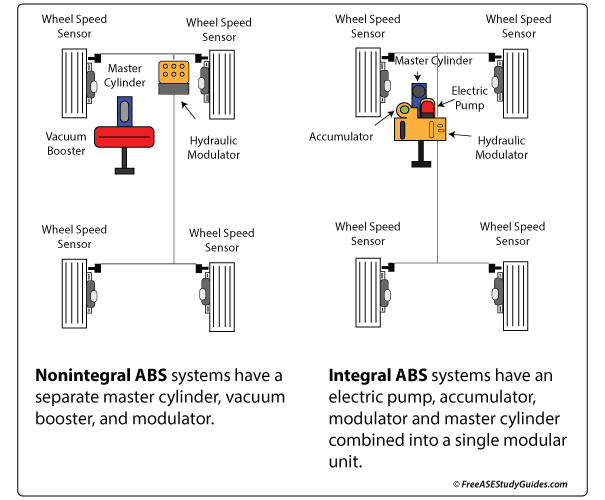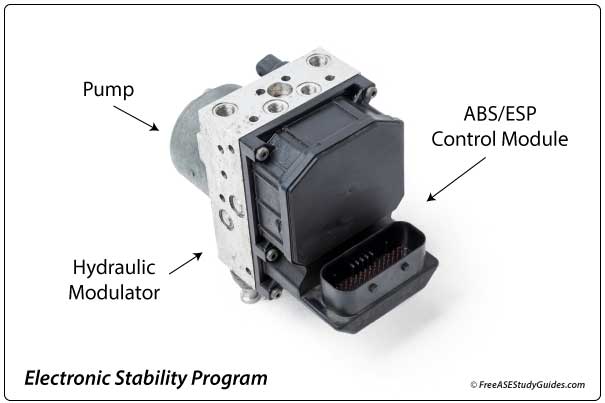Integral vs. Non-integral ABS

Non-integral ABS brake systems use a vacuum booster for boost assist. Integral units do not use an external boost source. Instead, they use an internal electric pump and accumulator to generate and store hydraulic pressure. An integral unit has a modular design containing many items in one. A non-integral brake unit is divided, separating the different functions and parts.

These units are labeled integral because the electric pump, modulator, accumulator, and master cylinder are combined in one unit. The pitfall of some of these units is the price of replacement. They can be costly if a component cannot be changed and the entire unit needs replacement.

A non-integral brake system uses a vacuum booster for power assist. The booster, master cylinder, and hydraulic modulator are all separate units. This can be a plus with a faulty component; only the component in question must be replaced. With an integral unit, often, the whole unit must be replaced. This costs the customer much more than replacing one part on a non-integral unit. Non-integral ABS units are also known as add-on ABS units and are very popular with manufacturers.